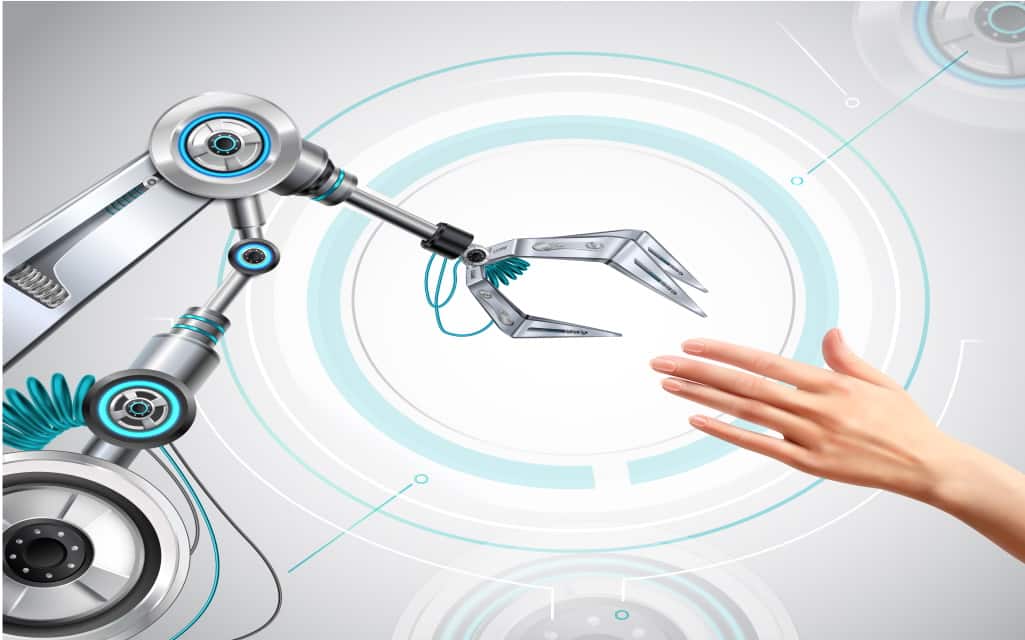While the growth of industrial robots has been slow, mainly due to poor market performance and low investment in the technology, one area of robotic technology that continues to thrive is the collaborative robot industry. Since 2019, the growth and performance of collaborative robots have grown by up to 30% in revenue.
Even with the slow growth in the industrial robot market, the larger future outcome projections are promising mainly due to the expected increase in the automation and the ageing workforce in most countries.
The future looks bright for collaborative robots. Within a short time, the market is expected to grow exponentially. This is due to the fact that collaborative commercial robots can be used to address the most pressing needs of any manufacturing company effectively. As an addition to the growth in the collaborative robot market, the technology used in cobots is also advancing rapidly as a way of trying to keep up with the market demands for better performing and more efficient collaborative robots.
Technological advancements in collaborative robots
Machine vision and learning
There are a few new technologies that have taken cobots to new heights. Among these technologies is the use of advanced embedded vision systems. These are the systems that play an essential role in ensuring that collaborative robots are safe and can work alongside humans and even identify when a situation is not safe for their operation.
Embedded vision systems also ensure that cobots can quickly identify the orientation and direction of parts. This makes their operation smoother while making collaborative robots more flexible and reliable.
The industrial applications likely to benefit from this technology include pick, place and sorting applications and complex inspection application. The implications of this new technology to these industrial applications will be defined by the software used.
Read More: Top 6 Aerospace Manufacturing Trends to Watch
Robotic mobility
In recent years, the e-commerce sector has rapidly adopted the use of robotic technology. Even though it is amongst the industries that adapted the technology late, e-commerce logistics companies have advanced in the use of the technology by merging robotics with mobility technology. This has been done in ways that have never been used, even in manufacturing. For this reason, the growth of mobile robots for different sectors other than the e-commerce sector is set to grow in the next ten years as manufacturers work to increase their investment in automation.
The future of collaborative robots
In 2020 and beyond, collaborative robots are expected to experience an immediate improvement in their interactive features. This will be done in the form of collaborating voice technology and voice recognition. This will make it even easier for collaborative robots to interact with human workers.
Advanced robot versions can be expected to include advanced vision systems with the ability to recognize different stages of production, including the stages being handled by human workers. This way, the collaborative robot will be able to perform the required operations without the need for a human operator.
The other future advancement for collaborative robots is the ability to work under unrestricted movement. Opposed to performing pre-programmed tasks, collaborative robots will become more intelligent. They will be able to move from the repetitive pre-programmed tasks to complete tasks even in unstructured environments accurately.
For all these to be possible, it will need the collaboration of Big Data, Internet of Things (IoT) and connectivity support. At the end of it, the big automation vendors will be required to integrate the technologies and the systems into a viable market product. As it is with machine learning and machine vision, niche mobility companies and specialists need to form deep partnerships with robot leaders in the market for this to become a reality. As deep robotic learning techniques and advanced visions systems continue to evolve, collaborative robot technology is expected to advance in the 2020s rapidly. This will ultimately pave the way for new robotic capabilities. With robust market growth and new technological innovations, the future looks bright for collaborative robots.



